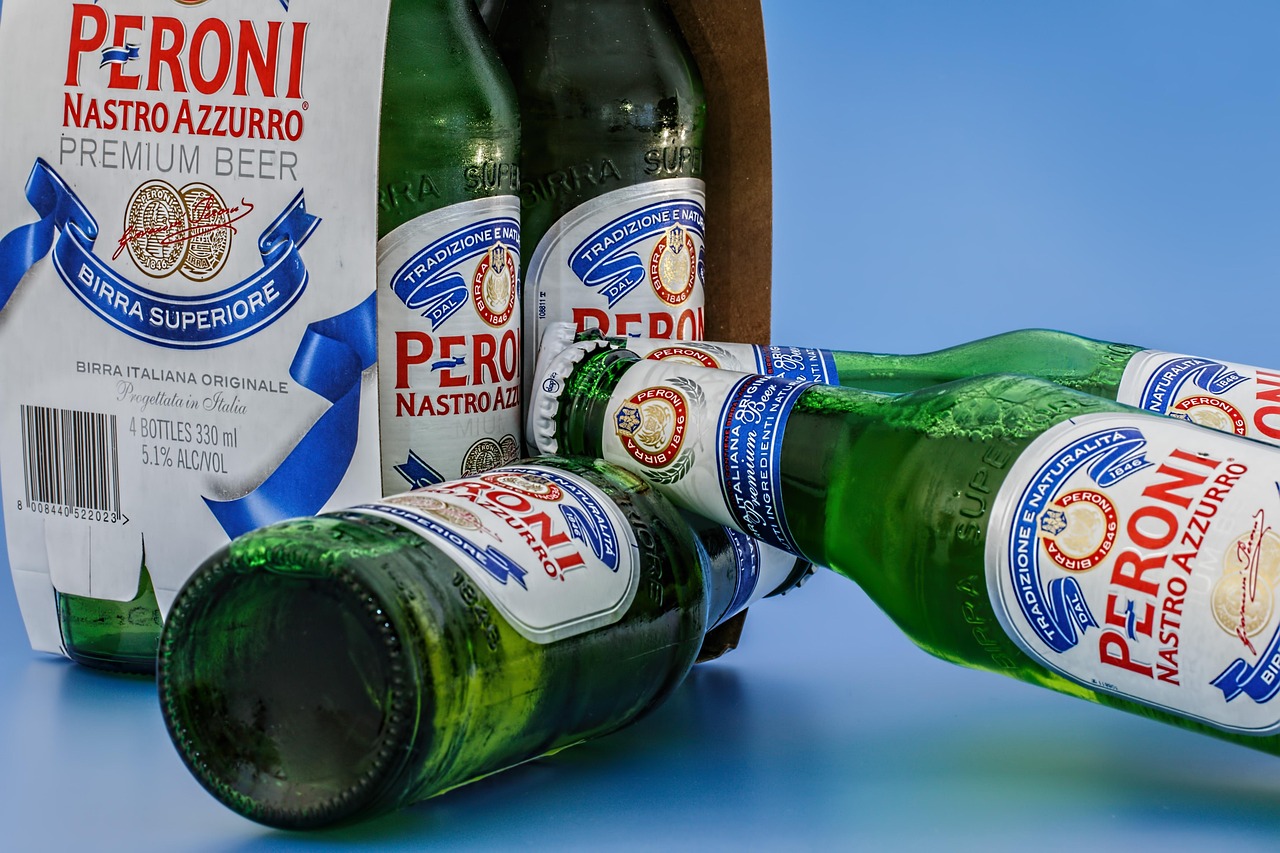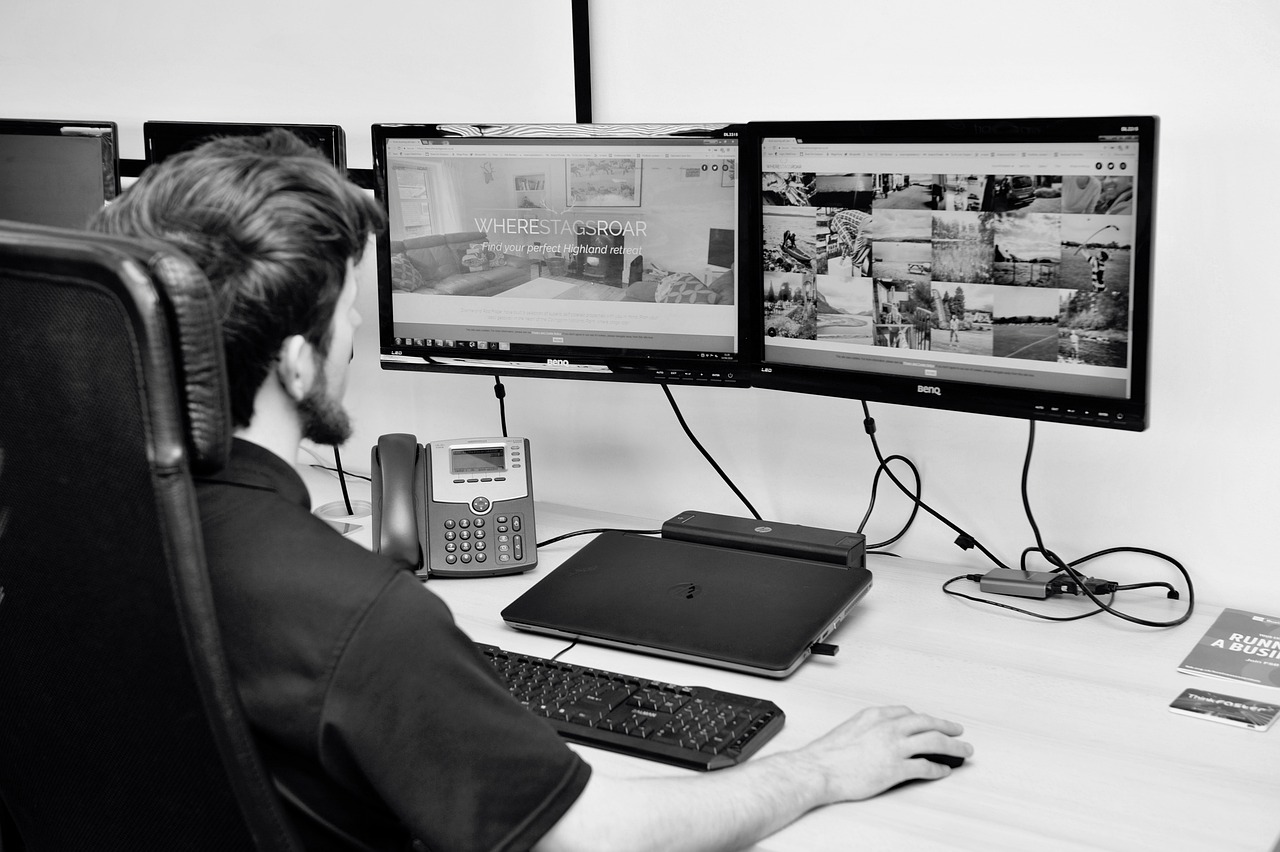Storyselling: How Brands Are Turning Narratives Into Revenue
In a world flooded with ads, pop-ups, and promotional emails, it’s getting harder for businesses to cut through the noise. But one approach continues to rise above the rest: storytelling. Or more specifically, storyselling—the art of using authentic, engaging narratives to sell products or services. It’s not about pushing a product; it’s about making people feel something. And when done well, that emotional connection doesn’t just create loyal customers—it drives serious revenue.
Why Stories Sell Better Than Specs
Facts and features have their place, but stories stick. That’s because people don’t make buying decisions based solely on logic—they buy based on emotion and justify it with logic later. When a brand tells a compelling story, it helps potential customers see themselves in that narrative. Whether it’s a tale of resilience, innovation, or community, a great story taps into our feelings and builds trust. Specs might inform, but stories inspire—and that’s what moves people to take action.
From Products to People: Humanizing the Brand
Storyselling works because it humanizes a business. Instead of seeing a faceless company, customers begin to connect with the people behind the brand or the mission it stands for. Brands like Patagonia don’t just sell jackets—they tell stories about environmental activism and adventure. That human element turns transactions into relationships. People remember how a brand made them feel, not just what it sold them.

Social Media: A Storytelling Playground
Platforms like Instagram, TikTok, and YouTube are tailor-made for storyselling. Behind-the-scenes videos, founder stories, customer testimonials, and day-in-the-life content all help build a narrative around a brand. Instead of broadcasting a hard sell, brands are sharing journeys—and inviting their audience to be part of them. These stories don’t need high production value. In fact, the more real they feel, the better. Authenticity is the currency of modern marketing, and social media is where it shines.
Customer Stories: Turning Buyers Into Brand Ambassadors
One of the most powerful tools in storyselling is letting your customers tell the story for you. User-generated content, case studies, and customer testimonials put real voices at the center of the brand experience. It’s social proof, sure—but more than that, it’s about showing how your product or service impacts real lives. When potential buyers see someone like them achieving a goal or solving a problem with your product, it builds credibility and relatability.
Building a Narrative Arc Across Channels
 Great brand storytelling isn’t a one-off effort—it’s a continuous narrative that unfolds across multiple platforms. From email campaigns to website copy, and product packaging to podcasts, each touchpoint should feel like a chapter in a larger story. When every piece fits together, it creates a cohesive brand experience that customers remember. This narrative consistency helps reinforce brand values, personality, and trust over time—making each interaction more meaningful and more likely to convert. Storyselling is more than a marketing buzzword—it’s a shift in how brands communicate with people. In a marketplace overflowing with choices, customers aren’t just looking for the best price or the flashiest features. They want connection, meaning, and purpose. Brands that can deliver that through genuine, engaging narratives are the ones that win attention—and loyalty.
Great brand storytelling isn’t a one-off effort—it’s a continuous narrative that unfolds across multiple platforms. From email campaigns to website copy, and product packaging to podcasts, each touchpoint should feel like a chapter in a larger story. When every piece fits together, it creates a cohesive brand experience that customers remember. This narrative consistency helps reinforce brand values, personality, and trust over time—making each interaction more meaningful and more likely to convert. Storyselling is more than a marketing buzzword—it’s a shift in how brands communicate with people. In a marketplace overflowing with choices, customers aren’t just looking for the best price or the flashiest features. They want connection, meaning, and purpose. Brands that can deliver that through genuine, engaging narratives are the ones that win attention—and loyalty.
So, if you want to grow your business, start thinking like a storyteller. Because at the end of the day, the brands we buy from are the ones that …
Read More →










 Content is king in the digital realm, and the dental field is no exception. Creating informative and engaging content not only educates your audience but also establishes your practice as an authoritative voice in the industry.
Content is king in the digital realm, and the dental field is no exception. Creating informative and engaging content not only educates your audience but also establishes your practice as an authoritative voice in the industry.

 Gone are the days when search engine rankings were solely based on keyword stuffing and backlinks. Today, search engines like Google have become smarter and more focused on delivering valuable content to users. So, how can you ensure a good user experience? It starts with having a well-designed website that is so visually appealing, easy to navigate, and loads like The Flash. Another aspect of good user experience is ensuring that your website is 100% accessible to all users, including those with disabilities. This means optimizing your site for screen readers, using alt tags for all images, and ensuring that text color contrasts are easily readable.
Gone are the days when search engine rankings were solely based on keyword stuffing and backlinks. Today, search engines like Google have become smarter and more focused on delivering valuable content to users. So, how can you ensure a good user experience? It starts with having a well-designed website that is so visually appealing, easy to navigate, and loads like The Flash. Another aspect of good user experience is ensuring that your website is 100% accessible to all users, including those with disabilities. This means optimizing your site for screen readers, using alt tags for all images, and ensuring that text color contrasts are easily readable.
 Backlinks have long been an important factor in
Backlinks have long been an important factor in 



 Your law firm’s expertise and specialties should be the ones you need to focus on rather than trying to compete with all terms in the law industry. It will not only help you successfully attract your target audience but also establish your authority in those specific areas of law. That said, start by taking a close look at the types of cases your firm handles most frequently. Next, consider the specific keywords and phrases potential clients might consider using when searching for legal services related to these practice areas. It’s crucial to strike a balance between targeting highly competitive keywords and long-tail keywords. And, of course, relevance is key.
Your law firm’s expertise and specialties should be the ones you need to focus on rather than trying to compete with all terms in the law industry. It will not only help you successfully attract your target audience but also establish your authority in those specific areas of law. That said, start by taking a close look at the types of cases your firm handles most frequently. Next, consider the specific keywords and phrases potential clients might consider using when searching for legal services related to these practice areas. It’s crucial to strike a balance between targeting highly competitive keywords and long-tail keywords. And, of course, relevance is key.
 Video content allows you to communicate directly with your customers, which can help to build trust and loyalty. By creating videos that evoke emotion and show the human side of your brand, you can create an authentic connection with viewers that will encourage them to become loyal customers. When creating video content, think about what topics your audience cares about and how you can use video to demonstrate the value of your product or service.
Video content allows you to communicate directly with your customers, which can help to build trust and loyalty. By creating videos that evoke emotion and show the human side of your brand, you can create an authentic connection with viewers that will encourage them to become loyal customers. When creating video content, think about what topics your audience cares about and how you can use video to demonstrate the value of your product or service.
 Video content can have a direct impact on the number of leads and sales your business receives. By creating educational or entertaining videos that demonstrate the value of your product or service, viewers are likely to become interested in what you have to offer. Additionally, video allows you to easily capture contact information from viewers who are interested in learning more. This can help you convert viewers into leads and customers, resulting in more sales.
Video content can have a direct impact on the number of leads and sales your business receives. By creating educational or entertaining videos that demonstrate the value of your product or service, viewers are likely to become interested in what you have to offer. Additionally, video allows you to easily capture contact information from viewers who are interested in learning more. This can help you convert viewers into leads and customers, resulting in more sales.


 If you’re not using TikTok, you’re missing out on many potential customers. TikTok is one of the most popular social media platforms right now, and it will only continue to grow in popularity. Trends like Reels and hashtag challenges are a great way to get your restaurant noticed by potential customers. Creating engaging content relevant to your brand can also help reach a large audience and generate more interest in your business.
If you’re not using TikTok, you’re missing out on many potential customers. TikTok is one of the most popular social media platforms right now, and it will only continue to grow in popularity. Trends like Reels and hashtag challenges are a great way to get your restaurant noticed by potential customers. Creating engaging content relevant to your brand can also help reach a large audience and generate more interest in your business. People love a good deal and are more likely to try new things when they’re on sale. So, promoting limited-time deals and menu items is a great way to increase interest in your restaurant. You can encourage these deals through your website, social media, email marketing, and traditional advertising. Just ensure that you include an expiration date, so customers know when the deal will end.
People love a good deal and are more likely to try new things when they’re on sale. So, promoting limited-time deals and menu items is a great way to increase interest in your restaurant. You can encourage these deals through your website, social media, email marketing, and traditional advertising. Just ensure that you include an expiration date, so customers know when the deal will end.


 Last but not least, you need to make sure your video is tagged correctly for SEO. This means using relevant keywords in the title, description, and tags so that people can find your video when they’re searching for something related. You’re more likely to get views if you can get your video to show up in the search results. And if you can get views, you’re more likely to get customers. So don’t forget to tag your videos. If you’re switching to video marketing or are thinking about it, these secrets will help you create a successful campaign. Remember to focus on the story, make it engaging, add some humor, and tag it for SEO. Your brand will be sure to stand out from the rest.…
Last but not least, you need to make sure your video is tagged correctly for SEO. This means using relevant keywords in the title, description, and tags so that people can find your video when they’re searching for something related. You’re more likely to get views if you can get your video to show up in the search results. And if you can get views, you’re more likely to get customers. So don’t forget to tag your videos. If you’re switching to video marketing or are thinking about it, these secrets will help you create a successful campaign. Remember to focus on the story, make it engaging, add some humor, and tag it for SEO. Your brand will be sure to stand out from the rest.…
 If you want to optimize your website for SEO, you need to make sure that it is properly coded. It would help if you also ensured that all of your content is high quality and keyword-rich. In addition, you should make use of social media marketing and backlinks. These are two of the most effective SEO techniques. To improve your SMS marketing strategy, you need to ensure that your messages are well-written and relevant to your customers. You also need to make sure that you are targeting the right audience.
If you want to optimize your website for SEO, you need to make sure that it is properly coded. It would help if you also ensured that all of your content is high quality and keyword-rich. In addition, you should make use of social media marketing and backlinks. These are two of the most effective SEO techniques. To improve your SMS marketing strategy, you need to ensure that your messages are well-written and relevant to your customers. You also need to make sure that you are targeting the right audience. If you want to succeed in e-commerce, you need to target the right audience. It would be best to make sure that your products and services are relevant to your customers. In addition, you need to make sure that your marketing messages are relevant to them as well. If you can do this, you will see a significant increase in sales and traffic. Follow these tips, and you will see a significant increase in traffic and sales. I hope the information above was helpful. If you have any questions, please don’t hesitate to ask for assistance.
If you want to succeed in e-commerce, you need to target the right audience. It would be best to make sure that your products and services are relevant to your customers. In addition, you need to make sure that your marketing messages are relevant to them as well. If you can do this, you will see a significant increase in sales and traffic. Follow these tips, and you will see a significant increase in traffic and sales. I hope the information above was helpful. If you have any questions, please don’t hesitate to ask for assistance.
 Before searching down some potential and qualified SEO agencies, it’s a must for you to understand what your company needs. Then, make sure you know the niche that you want to publish and build from your brand. It’s essential to do so because there are so many SEO agencies that they expertise in different aspects such as On-page optimization, Off-page optimization, social media optimization, and backlink building. However, it’d be better to look for an SEO agency that can generate all these aspects for your company.
Before searching down some potential and qualified SEO agencies, it’s a must for you to understand what your company needs. Then, make sure you know the niche that you want to publish and build from your brand. It’s essential to do so because there are so many SEO agencies that they expertise in different aspects such as On-page optimization, Off-page optimization, social media optimization, and backlink building. However, it’d be better to look for an SEO agency that can generate all these aspects for your company. When hiring an SEO agency, make sure they are transparent on their works and targets. You need to ensure they report everything of their progress regularly to you. For example, if they are working on some issues on On-page optimization, you should be aware of it and make sure they inform you as early as possible. This way, you can build trust with them. If you think they have this quality, consider choosing them. Now that you know everything about picking the best SEO agency, you also need to interview them and ask everything you want to know. A great SEO campaign can result in successful marketing and branding, which offer a high return on investment.
When hiring an SEO agency, make sure they are transparent on their works and targets. You need to ensure they report everything of their progress regularly to you. For example, if they are working on some issues on On-page optimization, you should be aware of it and make sure they inform you as early as possible. This way, you can build trust with them. If you think they have this quality, consider choosing them. Now that you know everything about picking the best SEO agency, you also need to interview them and ask everything you want to know. A great SEO campaign can result in successful marketing and branding, which offer a high return on investment.
 You should come up with a budget that you are comfortable paying for your SEO company. The services offered by the firm should be able to fit into your current marketing plan and within this set price point, too. Different SEO service providers have different rates, so you will want to do the research.
You should come up with a budget that you are comfortable paying for your SEO company. The services offered by the firm should be able to fit into your current marketing plan and within this set price point, too. Different SEO service providers have different rates, so you will want to do the research. You should also consider the type of services offered by a potential SEO company. If you have very specific needs, the best option may be to work with an agency that specializes in your industry or niche market so they can provide accurate and detailed reports on how well their strategies are working for you. This also ensures that new hires will fully understand what is expected of them from day one, which saves you time and money in the long run.
You should also consider the type of services offered by a potential SEO company. If you have very specific needs, the best option may be to work with an agency that specializes in your industry or niche market so they can provide accurate and detailed reports on how well their strategies are working for you. This also ensures that new hires will fully understand what is expected of them from day one, which saves you time and money in the long run.
 This is crucial if you want to sell your product to your target audience. This is a common mistake. I’ve seen many people promote products they don’t know about. Affiliates often promote products to make money, which is one of the most common mistakes.
This is crucial if you want to sell your product to your target audience. This is a common mistake. I’ve seen many people promote products they don’t know about. Affiliates often promote products to make money, which is one of the most common mistakes. Everyone loves a good offer. One of the most effective affiliate marketing strategies is to use coupons and deals. Coupons are trendy because they provide significant savings. Before purchasing a product, many consumers look for coupons and discounts on different coupon sites. Work with ambassadors or blogs to create unique promotional codes for your links to strengthen the affiliate relationship. Coupons and offers attract customers to your site, where they can also search for other products or services.
Everyone loves a good offer. One of the most effective affiliate marketing strategies is to use coupons and deals. Coupons are trendy because they provide significant savings. Before purchasing a product, many consumers look for coupons and discounts on different coupon sites. Work with ambassadors or blogs to create unique promotional codes for your links to strengthen the affiliate relationship. Coupons and offers attract customers to your site, where they can also search for other products or services.
 The truth is that there are several PR firms out there. You need to start by eliminating the bad companies from the good ones. This means you need to pay attention to the reputation of the company. By doing some research, you can eliminate companies that do not have experience in your area. Also, you need to avoid companies that have a negative image.
The truth is that there are several PR firms out there. You need to start by eliminating the bad companies from the good ones. This means you need to pay attention to the reputation of the company. By doing some research, you can eliminate companies that do not have experience in your area. Also, you need to avoid companies that have a negative image. If you are looking for an agency with experience in your niche or industry, you are likely to find companies that are already working with your competitors. This can have both a positive and negative experience. For instance, you can be sure the company understands what is required to deliver results. On the other hand, it can bring about a conflict of interest. You do not want to work with a PR agency with divided loyalties. Make sure you find out the clients the agency works with from your industry.
If you are looking for an agency with experience in your niche or industry, you are likely to find companies that are already working with your competitors. This can have both a positive and negative experience. For instance, you can be sure the company understands what is required to deliver results. On the other hand, it can bring about a conflict of interest. You do not want to work with a PR agency with divided loyalties. Make sure you find out the clients the agency works with from your industry. Although you want
Although you want 
 When customers purchase
When customers purchase Unlike the self-hosted platforms like Magento, Shopify saves you the hassle and fuss over developing costs and servers. As such, you can quickly set up your store and have it up and running within no time. The interface for admin is pretty user-friendly and clean, without lots of unnecessary and confusing things. It is intuitive because you find all the features structured in a logical manner. Besides, you can use provided resources like videos and documentation on the Shopify site, which can help you if stuck.
Unlike the self-hosted platforms like Magento, Shopify saves you the hassle and fuss over developing costs and servers. As such, you can quickly set up your store and have it up and running within no time. The interface for admin is pretty user-friendly and clean, without lots of unnecessary and confusing things. It is intuitive because you find all the features structured in a logical manner. Besides, you can use provided resources like videos and documentation on the Shopify site, which can help you if stuck. Nowadays, more people access the web via mobile devices than on desktops. It is therefore essential for any serious online entrepreneur to have a mobile-optimized site. The good news is that Shopify knows the importance of having mobile-friendly stores and ensures that all its themes are highly mobile responsive.
Nowadays, more people access the web via mobile devices than on desktops. It is therefore essential for any serious online entrepreneur to have a mobile-optimized site. The good news is that Shopify knows the importance of having mobile-friendly stores and ensures that all its themes are highly mobile responsive.
 SEO goes for quality traffic. The most significant advantage to having SEO services is that it is an inbound marketing strategy. Compared to the traditional methods where the customers would have access to your marketing whether they wanted it or not, the inbound marketing strategy focuses on giving the customers what they want, when they want it.
SEO goes for quality traffic. The most significant advantage to having SEO services is that it is an inbound marketing strategy. Compared to the traditional methods where the customers would have access to your marketing whether they wanted it or not, the inbound marketing strategy focuses on giving the customers what they want, when they want it. After potential clients conduct an online search and land on your page through the help of SEO, they will most likely find themselves paying a visit to your physical location. The SEO service, in this case, made it possible for your clients to gain information that attracted them to your services. Therefore, guaranteeing that you will pull a variety of customers.
After potential clients conduct an online search and land on your page through the help of SEO, they will most likely find themselves paying a visit to your physical location. The SEO service, in this case, made it possible for your clients to gain information that attracted them to your services. Therefore, guaranteeing that you will pull a variety of customers.

 Many studies have been conducted to check whether there is a correlation between posting frequency and follower growth. Posting regularly has also been found to have an effect on the engagement rate. It was discovered that when you post more, you are likely to get more followers and likes. In fact, profiles that post seven or more times a week are likely to get more likes and even gain more followers as compared to those that post less frequently. Therefore, you should post consistently, as you will see better results.
Many studies have been conducted to check whether there is a correlation between posting frequency and follower growth. Posting regularly has also been found to have an effect on the engagement rate. It was discovered that when you post more, you are likely to get more followers and likes. In fact, profiles that post seven or more times a week are likely to get more likes and even gain more followers as compared to those that post less frequently. Therefore, you should post consistently, as you will see better results.
 You Focus on Core Business Functions
You Focus on Core Business Functions


 Besides SEO, social media marketing plays a pivotal role in any SEO campaign. Instead of hiring someone to run your social media campaigns, most SEO agencies offer both SEO and social media campaign together. However, this is often applicable depending on the package you choose.
Besides SEO, social media marketing plays a pivotal role in any SEO campaign. Instead of hiring someone to run your social media campaigns, most SEO agencies offer both SEO and social media campaign together. However, this is often applicable depending on the package you choose.
 Before you start your online business, you need to make sure that you have enough resources that are required. First, you need to ensure that you have a professional and trained team that will help you with the best services you need. Once you have hired a digital marketing agency, be assured that you will be able to access or the skills you need because an agency will ensure that every department is running efficiently. Therefore, this is one of the easiest ways you can use to manage and control your business.
Before you start your online business, you need to make sure that you have enough resources that are required. First, you need to ensure that you have a professional and trained team that will help you with the best services you need. Once you have hired a digital marketing agency, be assured that you will be able to access or the skills you need because an agency will ensure that every department is running efficiently. Therefore, this is one of the easiest ways you can use to manage and control your business. It is important to note that scalability is one of the leading advantages of outsourcing. This is one of the primary reasons why most entrepreneurs do not need long-term contract commitments. By hiring a digital marketing agency, it will be very easier to market your products because these experienced agencies will offer you with the flexibility to efficiently grow your business. As an entrepreneur, you need to understand that the degree of flexibility will allow you and your team members to focus on the core activities that will help to grow your business.…
It is important to note that scalability is one of the leading advantages of outsourcing. This is one of the primary reasons why most entrepreneurs do not need long-term contract commitments. By hiring a digital marketing agency, it will be very easier to market your products because these experienced agencies will offer you with the flexibility to efficiently grow your business. As an entrepreneur, you need to understand that the degree of flexibility will allow you and your team members to focus on the core activities that will help to grow your business.…
 organizations or experts to guarantee you positive results. Look into their qualifications and experience to avoid getting duped. Experienced agencies or experts will have the right approach to your business and give you the kind of job you desire. They will offer you advice on ways to improve your business. Do not forget to consider their pricing and make comparisons between different agencies. Digital marketing is a common trend used by businesspersons to help market their products and services. Search engine optimization can be of importance to this type of marketing in several ways which include.
organizations or experts to guarantee you positive results. Look into their qualifications and experience to avoid getting duped. Experienced agencies or experts will have the right approach to your business and give you the kind of job you desire. They will offer you advice on ways to improve your business. Do not forget to consider their pricing and make comparisons between different agencies. Digital marketing is a common trend used by businesspersons to help market their products and services. Search engine optimization can be of importance to this type of marketing in several ways which include. Several people can know and understand what your brand entails. Introducing a new product to the market can be hard because it takes time to convince consumers why they should try it. Making them forgo a product they are acquainted with for a new product can be tedious. Visiting your site will help them understand every detail about your product. Site optimization will ensure a significant number of people get to know your product.…
Several people can know and understand what your brand entails. Introducing a new product to the market can be hard because it takes time to convince consumers why they should try it. Making them forgo a product they are acquainted with for a new product can be tedious. Visiting your site will help them understand every detail about your product. Site optimization will ensure a significant number of people get to know your product.…
 Instagram does not choose who joins the network and who doesn’t. That is why there are all types of people on Instagram-good and bad. Some people are on Instagram to interact with others and have fun. Others are on this platform to promote and sell their products. There is an unscrupulous group of Instagram fans who are out to do mischief. They impersonate public figures in a bid to get a huge following in a short period. When impersonation occurs on Instagram, your dignity on the social network is at risk. You never know what the impersonators are planning to post on the Instagram account bearing your official name. They may post derogatory remarks and photos that may work against your dignity and fame.
Instagram does not choose who joins the network and who doesn’t. That is why there are all types of people on Instagram-good and bad. Some people are on Instagram to interact with others and have fun. Others are on this platform to promote and sell their products. There is an unscrupulous group of Instagram fans who are out to do mischief. They impersonate public figures in a bid to get a huge following in a short period. When impersonation occurs on Instagram, your dignity on the social network is at risk. You never know what the impersonators are planning to post on the Instagram account bearing your official name. They may post derogatory remarks and photos that may work against your dignity and fame. Instagram verification with a badge may not be for everybody, but you can always ensure that your authenticity is not questionable on the social network platform. One way of doing so is linking your Instagram account to other verified social media networks. If you have a verified Facebook and Twitter accounts, you can use these accounts to give authenticity to your Instagram account. Just link your Instagram account to these accounts so that your fan base may have the feeling that you are real. If you have a website, you can also link your official Instagram account to it. Once you have linked all your social network pages and websites, now be careful with what you share. Don’t share the information that everyone has access to.
Instagram verification with a badge may not be for everybody, but you can always ensure that your authenticity is not questionable on the social network platform. One way of doing so is linking your Instagram account to other verified social media networks. If you have a verified Facebook and Twitter accounts, you can use these accounts to give authenticity to your Instagram account. Just link your Instagram account to these accounts so that your fan base may have the feeling that you are real. If you have a website, you can also link your official Instagram account to it. Once you have linked all your social network pages and websites, now be careful with what you share. Don’t share the information that everyone has access to.
 SEO optimization is a process that covers many parameters regarding your website. The experts know what to tune, eliminate or add depending on how the site is structured. When it comes to global SEO enhancement, the experts make sure that your business can compete with other global giants seeking the attention of the market segment as you. This focuses on building international traffic through higher ranking on search engines and engaging clients with intuitive content and media.
SEO optimization is a process that covers many parameters regarding your website. The experts know what to tune, eliminate or add depending on how the site is structured. When it comes to global SEO enhancement, the experts make sure that your business can compete with other global giants seeking the attention of the market segment as you. This focuses on building international traffic through higher ranking on search engines and engaging clients with intuitive content and media. Do you want an expert to monitor all your client’s reviews? The reviews play a great role in ranking a website in search engines like Google and therefore, they need to be filtered well and monitored professionally. Review Monitoring by experts gives you an easy time in knowing what the customers are saying about the business products and services. This way you can easily improve the business depending on what the clients want.
Do you want an expert to monitor all your client’s reviews? The reviews play a great role in ranking a website in search engines like Google and therefore, they need to be filtered well and monitored professionally. Review Monitoring by experts gives you an easy time in knowing what the customers are saying about the business products and services. This way you can easily improve the business depending on what the clients want.
 to find your content on search engines quickly. This is what it is referred to as search engine optimization. This also gives people an improved experience because they are able to find their searches easily. Online trends change with time, therefore, you need a search engine optimization specialist to keep everything in check. A professional who a keresőoptimalizálás szakértője can help you with matters related to optimizing your site. You should consider the following when hiring an SEO specialist.
to find your content on search engines quickly. This is what it is referred to as search engine optimization. This also gives people an improved experience because they are able to find their searches easily. Online trends change with time, therefore, you need a search engine optimization specialist to keep everything in check. A professional who a keresőoptimalizálás szakértője can help you with matters related to optimizing your site. You should consider the following when hiring an SEO specialist. You should be able to gauge whether the expert you are hiring is able to upgrade the key search results to your site. You should look for one who has a great experience in local optimization artistry. This helps those in your area of locality reach your site fast by typing certain keywords. An experienced one will include your city or town to your website and get you listed in some of the major search engines.…
You should be able to gauge whether the expert you are hiring is able to upgrade the key search results to your site. You should look for one who has a great experience in local optimization artistry. This helps those in your area of locality reach your site fast by typing certain keywords. An experienced one will include your city or town to your website and get you listed in some of the major search engines.… You need to understand that a good number of people would want to get all the necessary information about a product before they buy it. This is supposed to tell you the importance of content when it comes to online presence. The SEO agency that you hire should be able to supply you with quality content that will make your potential clients keep coming back. The content should be both interesting and informative as this is what most people look for on the internet.
You need to understand that a good number of people would want to get all the necessary information about a product before they buy it. This is supposed to tell you the importance of content when it comes to online presence. The SEO agency that you hire should be able to supply you with quality content that will make your potential clients keep coming back. The content should be both interesting and informative as this is what most people look for on the internet. There is no way you can talk about search engine optimization with bringing the issues of the keyword into the picture. When you go out there to find an SEO agency, you need to make sure that the do thorough research on the keywords that they use for your website. They also need to be in a position to bring targeted traffic to your business.…
There is no way you can talk about search engine optimization with bringing the issues of the keyword into the picture. When you go out there to find an SEO agency, you need to make sure that the do thorough research on the keywords that they use for your website. They also need to be in a position to bring targeted traffic to your business.…

 This is very crucial because it is the only way that your customers will reach you. The contact information should be placed at a strategic point where it can be easily viewed and accessed by the visitor. It should include a contact number, an email address and a contact form. Placing the contact information as part of an image can inconvenience the visitor if they want to contact you. Ensure that the customer can click and call or send you an email right from the site for quick and convenient communication.
This is very crucial because it is the only way that your customers will reach you. The contact information should be placed at a strategic point where it can be easily viewed and accessed by the visitor. It should include a contact number, an email address and a contact form. Placing the contact information as part of an image can inconvenience the visitor if they want to contact you. Ensure that the customer can click and call or send you an email right from the site for quick and convenient communication.

 This is a new method. It involves paying for your products to be placed in the work of the content creator. Very many channels allow this practice. Some notable examples include YouTube which will insert a product advert on its content for some payment. This will also be determined by the audience being targeted so that one will know which music or video YouTube will place your advert.…
This is a new method. It involves paying for your products to be placed in the work of the content creator. Very many channels allow this practice. Some notable examples include YouTube which will insert a product advert on its content for some payment. This will also be determined by the audience being targeted so that one will know which music or video YouTube will place your advert.…



